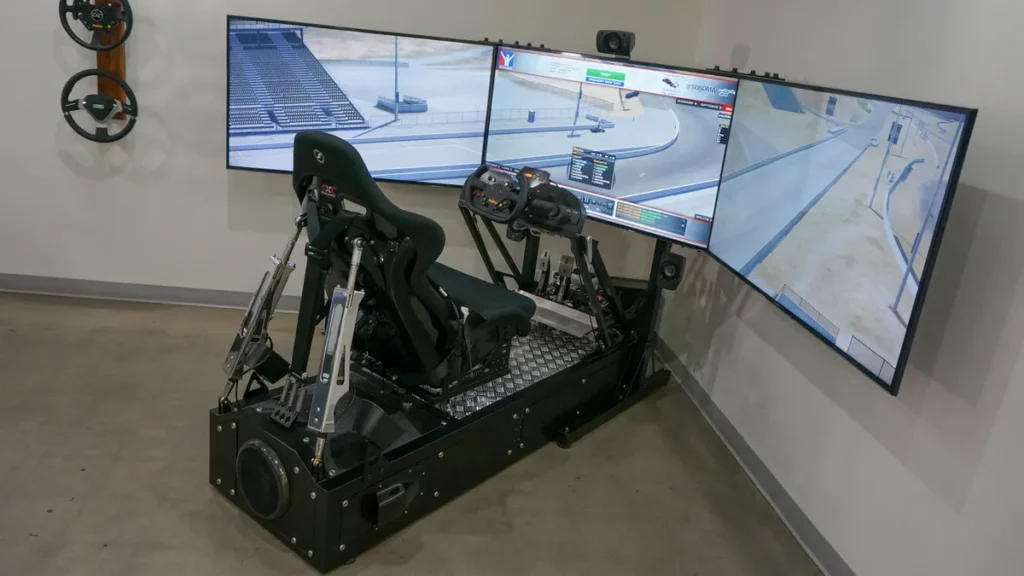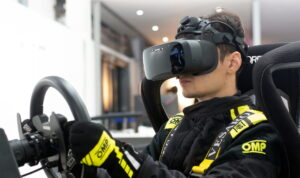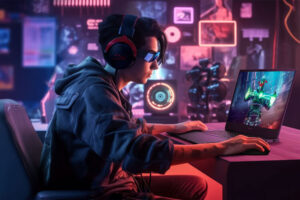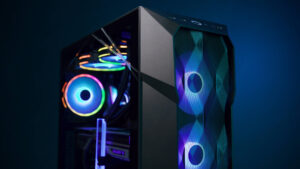The Evolution of Racing Simulators: From Arcade Cabinets to Virtual Reality

Racing simulators have undergone a remarkable evolution over the decades, transforming from simple arcade cabinets to immersive virtual reality experiences. This journey has been driven by advancements in technology, changing consumer preferences, and the relentless pursuit of realism. In this article, we’ll explore the fascinating history of racing simulators and how they have evolved into the sophisticated platforms we know today.
Arcade Era: The Birth of Racing Simulators

The origins of racing simulators can be traced back to the arcade era of the 1970s and 1980s. During this time, arcade cabinets featuring racing games began to appear in amusement arcades and entertainment centers around the world. These early simulators, such as Atari’s “Night Driver” and Namco’s “Pole Position,” used simple graphics and controls to provide players with a taste of the thrill of racing.
People who needed their house cleaned while they were busy battling for pole position on the simulators could even call up a company for house washing in St. Augustine and have their home sparkling clean by the time they finished their virtual race.
As technology advanced, so too did the capabilities of racing simulators. The introduction of 3D graphics and force feedback controls in the 1990s brought a new level of realism to arcade racing games. Titles like Sega’s “Daytona USA” and “Gran Turismo” by Sony’s Polyphony Digital became smash hits, captivating players with their immersive gameplay and stunning visuals.
Home Consoles: Bringing Racing Simulators to the Masses
With the rise of home gaming consoles in the 1980s and 1990s, racing simulators found their way into living rooms around the world. Console manufacturers like Nintendo, Sega, and Sony began to release racing games that offered a taste of the arcade experience in the comfort of home. These games allowed players to race against AI opponents or compete with friends in split-screen multiplayer mode.
The transition to home consoles also saw the emergence of dedicated racing peripherals, such as steering wheels and pedals, further enhancing the immersive experience. Titles like “Need for Speed,” “Mario Kart,” and “Forza Motorsport” became household names, attracting millions of players with their realistic physics, extensive car lists, and customizable options.
In case you are looking for a new home where you would be able to play on your simulator in peace, and are also considering financing options, you might find it helpful to look into the best mortgage companies in NC.
PC Gaming: The Rise of Simulation
While arcade and console racing games catered to a broad audience, PC gaming emerged as the go-to platform for hardcore racing enthusiasts seeking a more realistic experience. Simulation-focused titles like “Microsoft Flight Simulator” and “RACE 07” pushed the boundaries of realism, offering highly accurate physics models, dynamic weather effects, and detailed car customization options. This focus on realism also led to a demand for video editing services to create high-quality racing game footage and montages showcasing driving skills and virtual landscapes.
The modding community played a significant role in the evolution of PC-based racing simulators, with passionate fans creating custom tracks, cars, and even entire game engines to enhance the experience. This grassroots movement helped popularize the genre and laid the foundation for the future of racing simulation.
To make sure that your outer world is looking as pretty as your virtual world, consider investing in some landscaping in Florida.
Virtual Reality: A New Frontier

The advent of virtual reality (VR) technology has ushered in a new era for racing simulators, promising unprecedented levels of immersion and realism. VR headsets like the Oculus Rift, HTC Vive, and PlayStation VR allow players to step inside the cockpit of their favorite race cars and experience the thrill of high-speed racing like never before.
VR racing simulators leverage advanced motion tracking and haptic feedback systems to simulate the sensation of G-forces, bumps, and collisions, making players feel as though they’re actually behind the wheel. Titles like “Project CARS 2,” “Assetto Corsa Competizione,” and “iRacing” have embraced VR technology, offering breathtakingly realistic racing experiences that blur the line between virtual and reality.
Advancements in Graphics: Bringing Racing Worlds to Life
The evolution of graphics in racing simulators has been nothing short of revolutionary. Gone are the days of pixelated sprites and simple geometric shapes; today’s racing games boast stunningly detailed environments, lifelike vehicle models, and breathtaking visual effects that rival those found in blockbuster movies. Thanks to advancements in hardware and software, developers can harness the power of high-definition displays, advanced rendering techniques, and sophisticated lighting engines to create immersive racing worlds that rival reality itself.
Dynamic weather effects, such as rain, snow, and fog, add an extra layer of realism to racing simulators, affecting visibility, traction, and vehicle handling in real time. Detailed track surfaces, complete with tire marks, skid marks, and debris, further enhance the immersion by providing visual cues about the racing conditions. If you experience foundation issues, consider consulting a company for foundation repair in Kansas City. From sun-drenched asphalt to rain-soaked streets, every surface comes to life with an unprecedented level of detail and authenticity.
Moreover, advancements in graphics technology have enabled developers to push the boundaries of artistic expression, allowing for more creative and imaginative race tracks and environments. From futuristic cityscapes to scenic countryside vistas, the possibilities are endless, providing players with a diverse array of settings to explore and conquer. Whether you’re tearing through the streets of a bustling metropolis or navigating treacherous mountain passes, the stunning visuals of modern racing simulators never fail to impress.
If you are renovating your gaming room, and need to clear out space for your new setup, consider reaching out to a company for dumpster rental in Berthoud. With their services, you can efficiently dispose of old furniture and clutter, making room for your immersive gaming experience.
Physics Simulation: The Science of Racing
Behind the heart-pounding action and white-knuckle thrills of racing simulators lies a complex web of mathematical algorithms and scientific principles. Physics simulation is at the core of every racing game, governing how vehicles interact with the virtual world and respond to player inputs. From the way tires grip the road to the effects of aerodynamics on vehicle stability, every aspect of the driving experience is meticulously simulated to recreate the feel of real-world racing.
If your gaming room is working on solar power, ensuring its smooth operation is crucial. That’s where a reliable company for solar panel maintenance in Hillsborough comes in. Just like how physics simulation drives the realism of racing games, these experts keep your solar panels running efficiently by applying their knowledge of scientific principles and mathematical algorithms.
Advanced physics engines use sophisticated mathematical models to calculate factors such as tire friction, vehicle weight distribution, and suspension geometry in real time, resulting in realistic and believable driving dynamics. These engines take into account a multitude of variables, including road surface conditions, weather effects, and even the mechanical wear and tear on individual components, to create an immersive and authentic racing experience.
If your kids were playing a racing game but got a toothache, you might want to take them to see a dentist who specializes in pediatric dentistry in Fayetteville NC.
Furthermore, physics simulation plays a crucial role in determining the outcome of races, as even the slightest variations in vehicle behavior can have a significant impact on performance. Whether it’s mastering the art of drifting around corners or fine-tuning your car’s setup for optimal performance, understanding the underlying physics of racing is essential for success on the track. With advancements in technology, physics simulation in racing simulators continues to evolve, pushing the boundaries of realism and immersion to new heights. In addition, if you’re looking to capture thrilling racing moments in New Jersey, you might want to consider hiring a media production company in New Jersey to ensure your footage is professionally captured and edited.
Online Multiplayer: Racing Against the World
The advent of online multiplayer functionality has transformed racing simulators from solitary experiences into vibrant and dynamic communities where players can compete, collaborate, and connect with fellow enthusiasts from around the world. Whether you’re vying for supremacy in high-stakes tournaments or casually cruising with friends in an open-world sandbox, online multiplayer adds a new dimension of excitement and unpredictability to the racing experience.
After a long day in a simulator, sometimes it’s nice to unwind and relax. That’s where yoga classes in Austin come in. Picture this: you’ve been focused on racing, adrenaline pumping, and now it’s time to bring your body and mind back to balance. Joining a yoga class in Austin could be the perfect way to stretch out those muscles, clear your head, and rejuvenate for the next session. Plus, it’s a great opportunity to meet like-minded people and maybe even make some new friends outside of the virtual world. So, whether you’re into intense competition or just looking for some zen after a busy day, consider adding yoga classes in Austin to your routine.
One of the most compelling aspects of online multiplayer is the opportunity to race against real players in real-time, testing your skills and reflexes against opponents of varying skill levels and playstyles. Whether you’re battling for pole position in a fiercely competitive race or trading paint with rivals in a heated wheel-to-wheel duel, the thrill of victory and the agony of defeat are heightened when facing off against human opponents. If you’re looking to improve your gaming skills even further, consider enrolling in a security training academy in Los Angeles.
Moreover, online multiplayer fosters a sense of camaraderie and community among racing enthusiasts, as players come together to share tips, strategies, and stories of their on-track exploits. From joining virtual racing leagues and clubs to participating in online forums and social media groups, there are countless ways to connect with like-minded individuals who share your passion for speed and competition.
Accessibility and Inclusivity: Opening the Doors to All
In recent years, there has been a growing recognition of the importance of making racing simulators more accessible and inclusive to players of all backgrounds, abilities, and skill levels. Developers have responded by implementing a wide range of features and options designed to accommodate players with disabilities, physical limitations, and diverse learning needs, ensuring that everyone can enjoy the thrill of racing regardless of their individual circumstances. Additionally, when it comes to attending racing events in style, considering a Denver limo service can add an extra touch of luxury and convenience to your experience.
One of the most significant advancements in accessibility has been the introduction of customizable difficulty settings and assistive driving aids, which allow players to tailor the gameplay experience to suit their preferences and abilities. Whether it’s adjusting the level of AI difficulty, enabling auto-braking or steering assist, or tweaking the sensitivity of controls, these options empower players to play the game in a way that feels comfortable and enjoyable for them.
Furthermore, developers have made efforts to improve accessibility beyond the confines of the game itself, with initiatives aimed at fostering a more welcoming and inclusive community within the racing simulation genre. From organizing accessibility-focused events and tournaments to providing resources and support for players with disabilities, the gaming industry has taken significant strides toward creating a more inclusive environment where everyone feels welcome and valued, including those seeking physical therapy in Austin.
Simulation vs. Arcade: Finding the Perfect Balance
The debate between simulation and arcade-style racing has long been a topic of discussion among racing enthusiasts, with proponents of each camp extolling the virtues of their preferred style of gameplay. While simulation-focused titles prioritize realism, authenticity, and technical accuracy, arcade-style games often prioritize accessibility, excitement, and fast-paced action. However, in recent years, developers have begun to explore the middle ground between these two extremes, creating hybrid experiences that offer the best of both worlds.
For more privacy while gaming, consider installing designer slimline doors in your gaming room. These doors not only enhance the aesthetics but also provide a sleek and modern look, perfect for creating a gaming environment that balances style and functionality.
Hybrid racing simulators strike a balance between realistic physics simulation and arcade-style mechanics, allowing players to enjoy the thrill of high-speed racing without sacrificing authenticity. These games feature intuitive controls, forgiving handling, and dynamic gameplay mechanics that appeal to both casual players and hardcore enthusiasts alike. Whether you’re performing death-defying stunts in a tricked-out street racer or mastering the art of precision driving in a high-performance supercar, hybrid racing simulators offer a diverse and engaging gameplay experience that caters to a broad audience of players.
Moreover, hybrid racing simulators blur the line between simulation and arcade by offering customizable gameplay options and difficulty settings that allow players to tailor the experience to suit their preferences and skill levels. Whether you’re looking for a realistic and challenging simulation or a fast-paced and action-packed arcade experience, there’s a hybrid racing simulator out there that’s perfect for you. In case you want to look your best while driving in a simulator, consider getting laser hair removal in Markham.
Emerging Technologies: Shaping the Future of Racing Simulation

Looking ahead, the future of racing simulation is filled with exciting possibilities thanks to emerging technologies such as artificial intelligence, machine learning, and augmented reality. These technologies have the potential to revolutionize the racing genre, offering new ways to experience, interact with, and enjoy virtual motorsports.
In case you’d like to buy items from your favorite game, including branded merchandise, there are plenty of options available online or at specialty stores.
Artificial intelligence (AI) and machine learning algorithms are being used to create more realistic and intelligent opponents in racing simulators, providing players with challenging and unpredictable competition. These AI-driven opponents can adapt to player strategies, learn from their mistakes, and even develop their own unique racing styles, making each race feel fresh, exciting, and unpredictable.
Augmented reality (AR) technology holds the promise of blending the virtual and real worlds, allowing players to race against virtual opponents in real-world environments. Imagine strapping on a pair of AR glasses and seeing virtual race cars zipping around your living room or neighborhood, dodging obstacles, and competing for the checkered flag. With AR technology, the possibilities for immersive and interactive racing experiences are limited only by the bounds of imagination.
In case you love playing games in the darkness of your room, motorized window blinds in Colorado Springs can help you control the amount of light entering your space, creating the perfect ambiance for your gaming adventures.
Furthermore, advancements in hardware such as haptic feedback suits, motion-sensing peripherals, and immersive VR headsets promise to further enhance the immersion and realism of racing simulators. Whether it’s feeling the rumble of the engine beneath you, experiencing the sensation of G-forces as you corner at high speed, or stepping inside the cockpit of a virtual race car, these technologies bring the thrill of racing to life in ways never before possible.
As these technologies continue to evolve and mature, the future of racing simulation looks brighter than ever before, promising even more thrilling, immersive, and lifelike experiences for players around the world. Whether you’re a casual gamer looking for a quick adrenaline rush or a hardcore enthusiast seeking the ultimate racing experience, the future of racing simulation has something for everyone.
Conclusion
The evolution of racing simulators from simple arcade cabinets to immersive virtual reality experiences has been nothing short of extraordinary. With advancements in graphics, physics simulation, online multiplayer, accessibility, and emerging technologies, racing simulators have become more realistic, engaging, and accessible than ever before. Whether you’re a casual gamer looking for a quick adrenaline rush or a hardcore enthusiast seeking the ultimate racing experience, there’s never been a better time to jump behind the wheel and hit the track. Strap in, rev your engines, and get ready for the ride of a lifetime.




